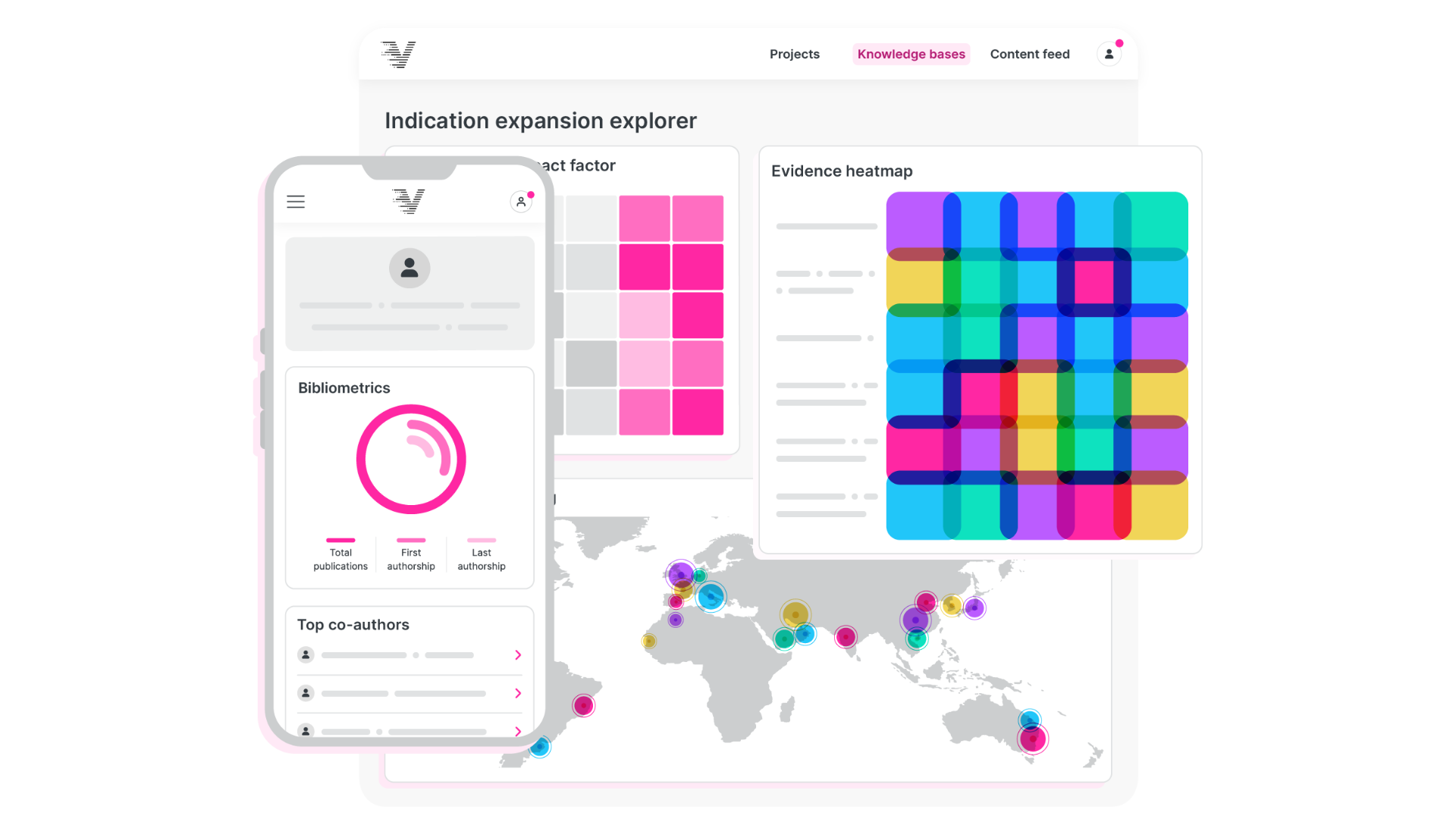Finding the voices that matter

Medical engagement is never just about volume. The most vocal experts are not always the most trusted, and the most cited are not always the most connected. When stepping into new or adjacent therapeutic spaces, especially in areas not yet fully defined by treatment guidelines or consensus, identifying who truly shapes the conversation is critical.
This is where traditional approaches can fall short. Relying only on past congress activity or top-line publication counts risks missing the rising experts who are defining the next wave of thinking. To move forward with confidence, medical engagement teams need a more comprehensive view, one that integrates publication data, emerging research themes, digital influence, and scientific credibility.
That was exactly the challenge facing one of our clients in the consumer health space. Their product, an over-the-counter fiber supplement, had performed well in its current positioning. But they were ready to grow and wanted to explore new indications that aligned with evolving science and real-world health needs.
A dual mandate: scientific rigor and commercial logic
Our task was to support their exploration with a solid foundation of evidence and insight. They needed to know:
- Where, according to the science, are the credible opportunities for expansion?
- Where is there both clinical and commercial whitespace to move into?
- Who are the trusted experts already shaping the relevant narratives?
We started by constructing custom search strategies and running structured, iterative literature reviews. The goal was not simply to retrieve high-volume results but to identify meaningful clusters; areas where plausible mechanisms of action were being explored in relation to novel indications.
Using topic analysis, we mapped those research threads, linking each to unmet needs, disease burden, and biological rationale. For example, we found clusters suggesting adjunct benefits in metabolic conditions and immune-modulated disorders. Some of these were in early stages, others already supported by promising exploratory studies.
To assess commercial potential, we overlaid this scientific analysis with epidemiological and burden-of-illness data. This provided a reality check on scale and need and resulted in a ranked shortlist of viable opportunities, each grounded in both clinical and commercial reasoning.
Building the expert map: influence beyond the obvious
With a clearer view of where to explore, attention turned to who to engage. This is where the strategy required more nuance.
We began by identifying researchers actively contributing to the scientific discussion around the shortlisted indications. But rather than focusing only on publication volume, we examined patterns:
- Were these authors consistently publishing on related mechanisms?
- Were they appearing as last or corresponding author, indicating leadership?
- Were their studies being cited across multiple research groups?
We also layered in digital and social metrics. Who was referenced or engaged with by other experts? Who was speaking at targeted forums or contributing to patient education efforts?
By combining these views, we created a weighted engagement map, allowing the client to see not only who had strong scientific credentials but who had reach, relevance, and trust across multiple spheres.
The result was a highly practical asset: a prioritized list of engagement targets, segmented by therapeutic theme, level of influence, and type of activity. This included both established thought leaders and emerging experts, tailored to the client’s expansion focus.
More than a map: a platform for continuous alignment
The final delivery included more than a report. We built a concise, visual scientific landscape summary for each proposed indication, paired with competitive analysis and opportunity sizing. This allowed internal teams to quickly compare options, link science to strategy, and make evidence-backed choices on where to explore further.
To ensure the insights stayed current, we also delivered a live monitoring board. It continues to track new publications and expert activity within the priority areas, helping the client stay alert to early shifts and new voices that could support engagement, partnerships, or research validation.
Why it matters
For many medical and comms teams, the pressure to move fast can lead to shortcuts: known names, top-line metrics, or internal lists that have not been revisited in years. But when entering new indications, that approach can introduce real risk: missed opportunities, misaligned engagement, or wasted effort.
This project showed that with the right combination of scientific review, topic mapping, and expert profiling, it is possible to build a much clearer picture of where to go and who to go with. It gave the client clarity, confidence, and a credible route forward.
If your team is exploring new therapeutic territory and wants to build a more evidence-driven engagement plan, we would be happy to share more about the approach and results. The right voices are out there, and with the right tools, they are easier to find.

